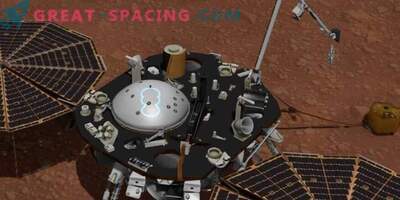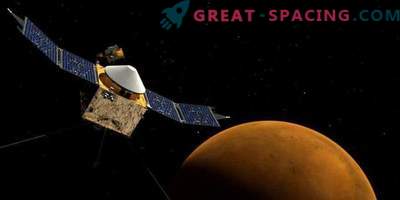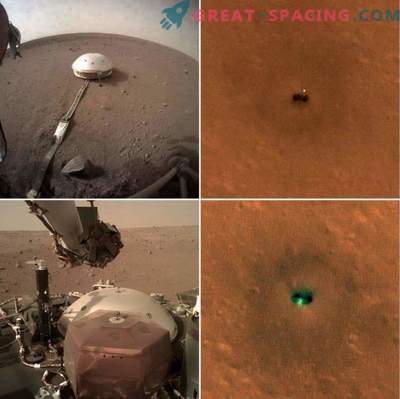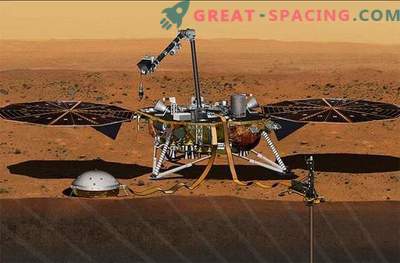
Artistic vision of the InSight spacecraft rushing to Mars
On November 26, NASA's InSight spacecraft should land on Mars. On August 6, he noted half the journey to the Red Planet. All his tools have been tested for functionality.
As of August 20, the device has done 277 million km since the launch of 107 days ago. It will take another 98 days, and he will overcome 208 million km, landing in the Elysium region, where he will be the first mission to study the deep Martian interior. InSight will use seismic surveys, surveying and heat transfer.
The InSight team takes advantage of flight time to not only plan, but also practice landing at a critical day. Most of the time is spent on activating and testing the subsystem and highly sensitive scientific tools. On July 19, they tested a seismometer used to fix shocks on Mars. The SEIS instrument is a 6-touch seismometer that combines two types of sensors for measuring surface movement over a wide frequency range.
The team also checked a tool that measures the amount of heat coming out of the planet. The HP3 uses a mechanical, self-pressing arm that penetrates to a depth of 3-5 m. The sensor measurements will give the first accurate definition of the decreasing heat. The test included the activation of the main electronics power supply for the device, the test of all elements of the sensor devices and the use of some internal heaters. The third tool is RISE, which uses the spacecraft’s radio communication with the Earth to evaluate the oscillations of the axis of rotation of the Red Planet. These measurements will allow to understand the planetary core.

A slow shutter speed image (24 seconds) is captured by the ICC camera of the InSight. The picture shows some of the features of the rear cover encapsulating the spacecraft. On the back case there is a parachute and several components used in the later stages of entry, descent and landing
The cameras of the spacecraft, which looked inside the body of the apparatus itself, also perfectly proved themselves. The next picture is planned to get on the Martian surface. If everything goes according to plan, the camera will first capture the Elysium region a few minutes after landing InSight on Mars.











































